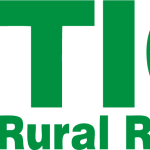
Written by Matheus Ribeiro, John Nelson, and Ritika Lamichhane
Pillbugs (Armadillidium vulgare)

In most cases, pillbugs (known as roly polys or snowbugs) are beneficial arthropods that are very adept at recycling nutrients. However, when present in large populations, they can shift their status from being beneficial arthropods to becoming significant pests, causing substantial injury and economic damage to crops such as soybeans. Normally, cold winter temperatures can help regulate the populations of pillbugs and other insects. However, in 2024, the mild winter temperatures in Eastern Nebraska likely provided a suitable environment for pillbug populations to thrive. Pillbugs like moisture and residue cover, and do not like to be exposed to direct heat and sunlight. Earlier in the 2024 season, pillbug injury in soybean fields was reported in eastern NE in no-till irrigated fields. Once the soybeans emerge, pillbugs clip the cotyledons off at the hypocotyl (the part of the stem just below the cotyledonary node) which eventually kills the plant (see the latest cropwatch publication: cropwatch.unl.edu/2024/pillbugs-causing-injury-soybean-crops-nebraska). As the temperature rises and conditions become drier, pillbugs will become less active in the field. If damage happens often, replanting sections of the field should be considered, but portions of the replanted area can still be at risk if the environmental conditions favor the pillbugs. Managing pillbugs is challenging. Results from insecticide efficacy trials have been inconclusive, and although cultural practices such as strip tillage and burning crop residue might help reduce pillbugs populations, these practices do not align with the current soil conservation methods such as no-till systems.
Japanese beetle (Popillia japonica)

A pest that is generally not an issue in southeast Nebraska is the Japanese Beetle. We are seeing more and more of these beetles in the area each year, but to date they have not caused economic damage to corn or soybeans. Japanese beetles can contribute to defoliation in soybeans, where they skeletonize the leaves, leaving only the leaf veins. If they defoliate 30% in the vegetative stage or 20% in the reproductive stage, soybeans should be treated with an insecticide. Here is a link to a chart from NebGuide G2259 that explains how to estimate insect defoliation in soybeans: https://i0.wp.com/cropwatch.unl.edu/2017-CW-News/2017-images/insect-management/soybean-defoliation-guide.png?ssl=1. In corn, the adults feed on leaves, tassels, silk, and pollen. The leaf feeding is not economically important, but the main concern is silk clipping which may cause reduced pollination. If you want to learn more about the economic threshold considerations, please see this article jenreesources.com/2024/07/14/july-2024-crop-update/. There are several types of insecticides that are effective in controlling this pest, but you may need to spray multiple times. Insecticides available to control Japanese beetles are listed in 2024 Guide for Weed, Disease, and Insect Management in Nebraska (EC 130).
Soybean Gall Midge

Soybean gall midge (SGM) has been a major problem in eastern NE for some time. Nebraska Extension Entomology Specialist Dr. Justin McMechan and his team are evaluating the impact of soybean gall midge at ten sites across eastern NE. They have already reported adult emergence in Saunders, Lancaster, and Otoe Counties. The adult gall midge overwinters in the previous year’s soybean field and subsequently flies to the adjacent field to lay eggs on young soybean plants. That is why it is crucial to scout field borders for early detection of soybean gall midge especially where a history of issues with gall midge injury has occurred. Once the egg hatches, young larvae start feeding on soybean plants. This results in dark brown or black discoloration at the base of the plant below the cotyledonary nodes, and the plant becomes prone to breaking off at the base. As the larval population increases, discoloration spreads around the stem. Peeling back the outer layer of the stem reveals orange or white larvae. Larvae can be observed as early as the V2 stage (2nd leaf stage) of soybeans. Managing soybean gall midge has been difficult. Foliar sprays have demonstrated some effectiveness but are inconsistent between locations and years. No specific foliar-applied or seed treatments tested to date have provided consistent control.
Soybean Stem Borer (Dectes texanus texanus)
Another pest that has been around for a few years and has triggered growers to search for control recommendations is the soybean stem borer. The adult females will lay their eggs in the soybean leaf petiole, and after hatching, the larvae bore into the stems and feed on the pith until pupation and the formation of the overwintering chamber (located at the base of the main stem). This weakens the plants and causes them to be more prone to lodging. If you do identify stem borer populations in your fields, prioritize harvesting these fields as early as possible. Longer season soybean varieties that mature later also are suggested because they have a longer time to harvest before they lodge compared to short-season varieties that have shown to have more harvest losses due to lodging. Soybean stem borer populations can be reduced by rotating to a different crop other than soybean, controlling weed species that serve as a host to the pest (ragweed and cocklebur for example), and/or considering the adoption of a trap crop such as sunflower adjacent to your soybean field.


